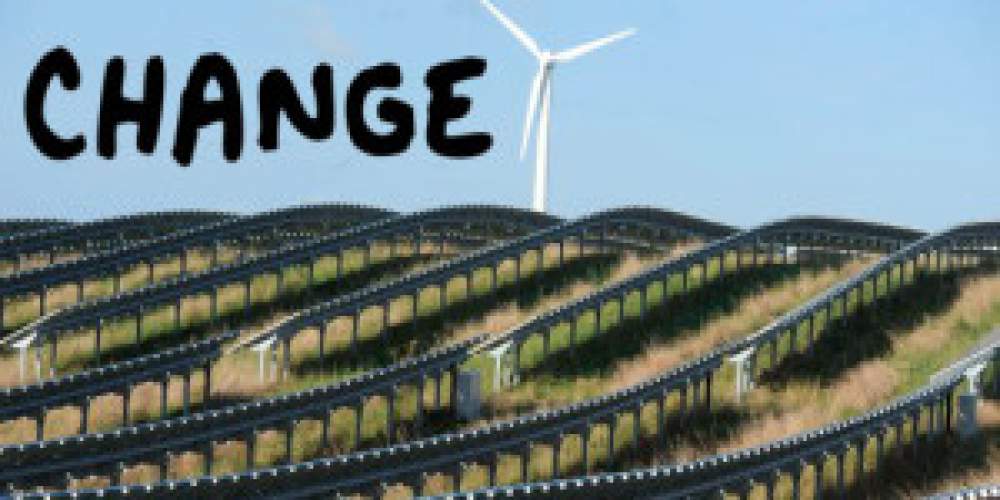The government has recently announced that it is going to make a raft of significant changes to the way subsidies are given out to the renewable energy industry. The ministers have made a public announcement that the support for onshore wind and solar energy will be significantly reduced, while more backing will be provided to offshore wind power. The Chief Secretary to the Treasury, Danny Alexander, has announced that the changes which are being made to the subsidy are more of a balancing act, and are not going to bring about a radical change in the overall spending. However, the Labour Party was quick to state that the 'changing and chopping' pricing system was not a very viable way to do business.
As per the changes, the prices which have been promised to producers of onshore solar energy and wind power will be reduced from the start of 2015, while the total payment made for offshore wind power will see a significant jump. This shift towards wind energy generally comes as a result of the Autumn Statement which will be delivered by Chancellor George Osborn to the MPs on Thursday. There were several other changes that were announced before the statement as well, as mentioned below:
- The details of the National Infrastructure Plan were made available, with dedicated plans that require an investment of 375bn GBP in numerous different projects related to the energy, communications, water and transport industries.
- The National Infrastructure Plan also states that the government's stake of 40% in the Eurostar rail service should be sold off and the proceeds should then be used to double the target which the country currently has for the sale of financial and corporate assets, between the years 2014 to 2020. It states that the current target, which is 10bn GBP, should be expanded to 20bn GBP.
- It also states that an additional 50 million GBP should be made available for the redevelopment of the railway station that is situated at Gatwick Airport, while additional fiscal support should be provided in order to develop a new nuclear power station which would be located at Wylfa, North Wales.
- Confirmation has also been given to a guarantee by the United Kingdom to an agreement of up to 1bn GBP for the extension of the Northern Line all the way to Battersea in London.
- Improvements have also been announced to the A50 near Uttoxeter in Staffordshire, while improvements have also been announced for the A14 which is near the port of Felixstowe in Suffolk, as part of the road projects in the National Infrastructure Plan.
- According to the British Broadcasting Corporation, it is expected that business rate rises are also going to be capped at 2% in Wales and England, rather than be linked to the rate of inflation, as per the plans of Mr. Osborne.
Internal sources from both the coalition parties have stated that due to the level of investment input in the projects relating to the onshore wind and solar energy, the industry no longer is reliant on support from the State. On the other hand, however, they were quick to state that offshore wind sources were still in some serious need of government subsidies in order to receive investment in the long term.
There were some suggestions being made that this move was primarily a response to the unhappiness of the Conservative MP at numerous wind farms being opened in his constituencies, which were vehemently denied by Mr. Alexander. Sources from both the Liberal Democrat parties as well as the Conservative party stated that the decision was firm from a political point of view, and made a lot of sense, as it countered a direct threat which was posed by the UK Independence Party, which is completely against the concept of wind farms and renewable sources of energy.
In order to encourage firms to invest in this sector, the government has set significantly high strike prices. Strike prices are basically the prices which the government promises to pay for every unit of electricity which is consumed, and at present, they are set at a significantly high level when compared with the current value of energy. A source from the Conservative Party stated that in the year 2015 and forward, he was expecting a very significant cut in the prices for onshore wind. Another source also stated that this was the beginning of the end for all mature renewables. Another source stated that the position of renewable energy was jolly good. If onshore energy wasn't curtailed slightly, the problem would no longer be a financial one but would enter political territory. He stated that the same could be applied to the solar energy industry. He continued by stating that as a result of this, it made good sense in terms of the value for money provided, to constrain onshore and solar energy, as it lets them move faster than the forces in the market, and also allows them to ensure that the primary renewable technology in the United Kingdom, offshore wind energy, which can hit its full heights in the 2020s, can receive the early support that it requires in order to mature and develop significantly over the next few years.
Michael Fallon, the Minister for Energy has stated that a much fairer distribution of costs need to be set in place. A formal denial was also made by Downing Street to the rumors that the cuts were primarily announced as a response to the public's outcry that the excessive wind farms were causing a concern for the countryside. The official spokesman for the Prime Minister stated that the decision to curtail onshore wind energy was solely based upon the falling cost of onshore wind farms. It remains to be seen whether these changes will bring about positive economic growth or not.





























